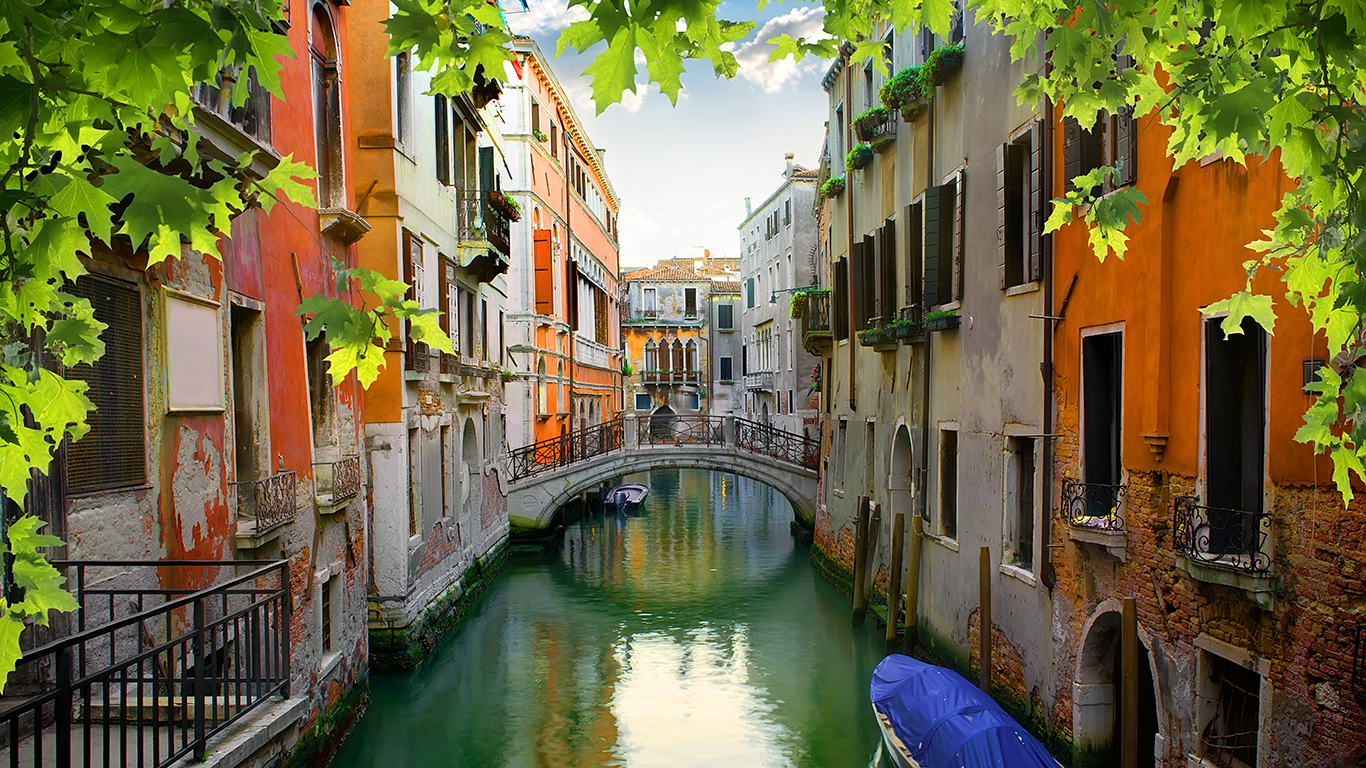
Most Americans live in a car-centric world, depending on automobiles for sometimes lengthy commutes to work, shopping and entertainment, social interaction, and family vacations.
As noisy as it is, the perpetual sound of motor vehicles in the background of our daily lives, and the sound of the road when we travel, is taken for granted and barely noticed — until it’s not there.
Quietude can be a revelation, as it’s experienced in places where cars are scarce, or — more impressively — not allowed at all. The tranquility of a car-free destination is enhanced by the slower pace that comes with the walking or biking required to get from here to there. The pace and the noiselessness also allows for a deeper appreciation of the surroundings, for more satisfying outdoor recreation, and for heightened enjoyment of such simple pleasures as romantic strolls or ice cream with the kids.
For people looking for unique travel experiences, car-free vacations can be truly enjoyable, and, not surprisingly, locations that ban cars tend to be particularly scenic or otherwise visually interesting. These are the most beautiful vacations in the U.S.
24/7 Tempo has collected a list of car-free places open, some of them extremely popular with tourists, others virtually unknown outside their regions. Some of these places are roadless because of their unique geography, but more usually, they’re places are car-free by choice. More and more, communities, particularly in Europe, are embracing the concept of pedestrian zones, where cars are periodically or permanently banned. All of these destinations, whether completely or just mostly without cars, offer a calming experience rare in the modern world.
But in case you’re looking for a more standard kind of vacation, one where ancient history, natural wonders, or nightlife are key attractions, you’re not alone. Such places are so popular, visitors flock to them every day. Here are destinations where tourists outnumber locals.
Click here to see 25 places that have banned cars.
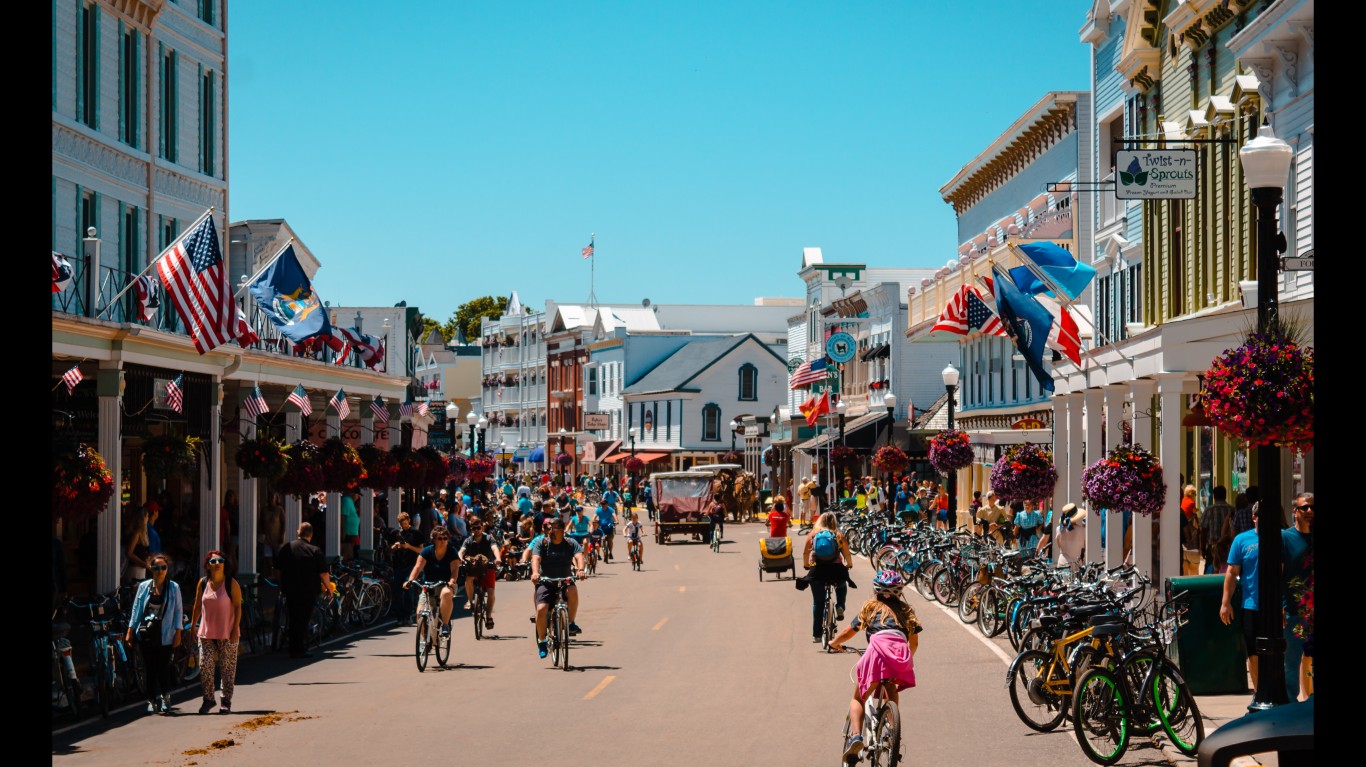
Mackinac Island, Michigan
With only 500 residents and boasting a historic village and natural charms, Michigan’s Mackinac Island — usually considered to be in Lake Huron, but technically in the Straits of Mackinac, which connects lakes Huron and Michigan — has benefited from a history of conservation. Originally a Victorian vacation retreat for the wealthy, over 80% of the island is now a state park. Tourists enjoy visiting restored mansions, the old fort, and such natural limestone formations as Skull Cave and Arch Rock. All touring is on foot, by bicycle or in horse-drawn carriages.
[in-text-ad]
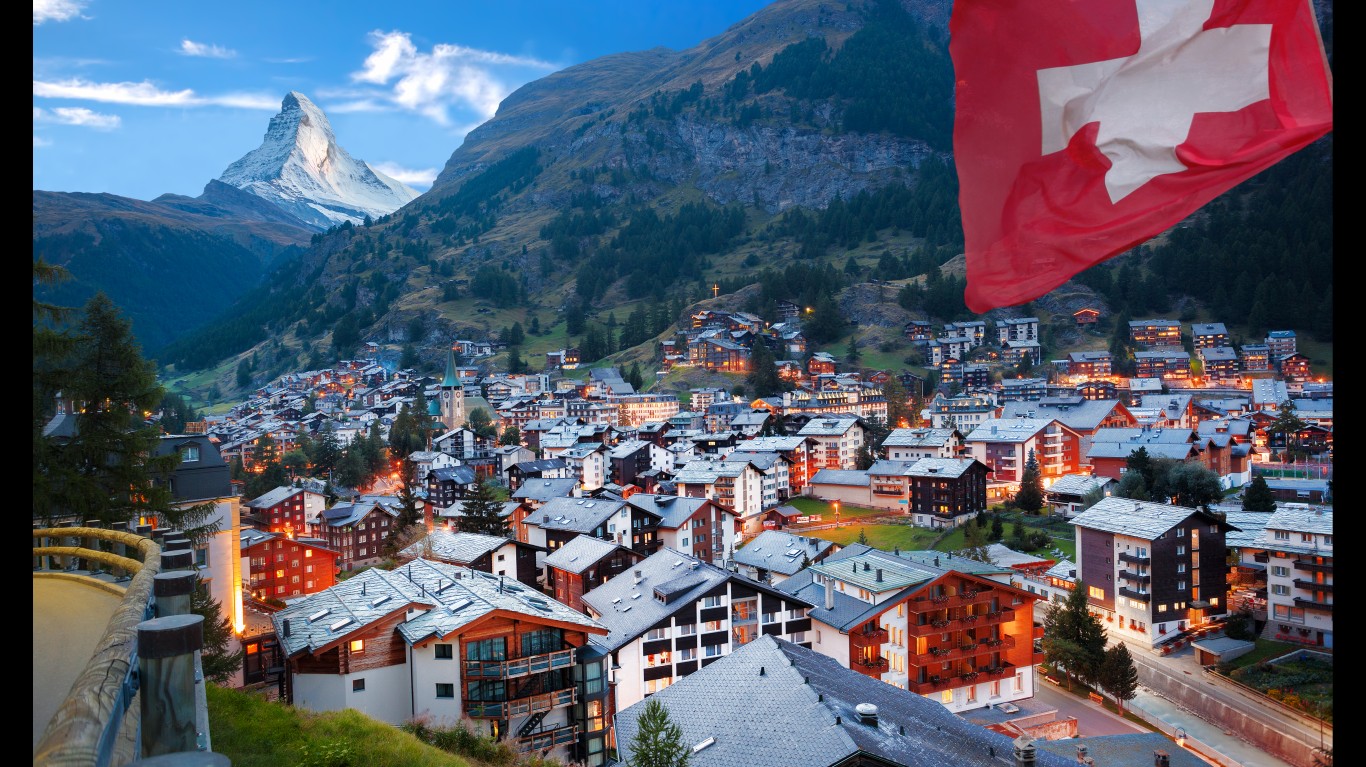
Zermatt, Switzerland
At the foot of the Matterhorn, Zermatt is a popular family ski resort, with restaurants, shops, museums, a ski school, and a network of lifts. Because cars are banned in Zermatt, most people park in nearby Täsch and train in. In town, people rely on bicycles and horse-drawn carriages, though electric taxis and buses are also available.
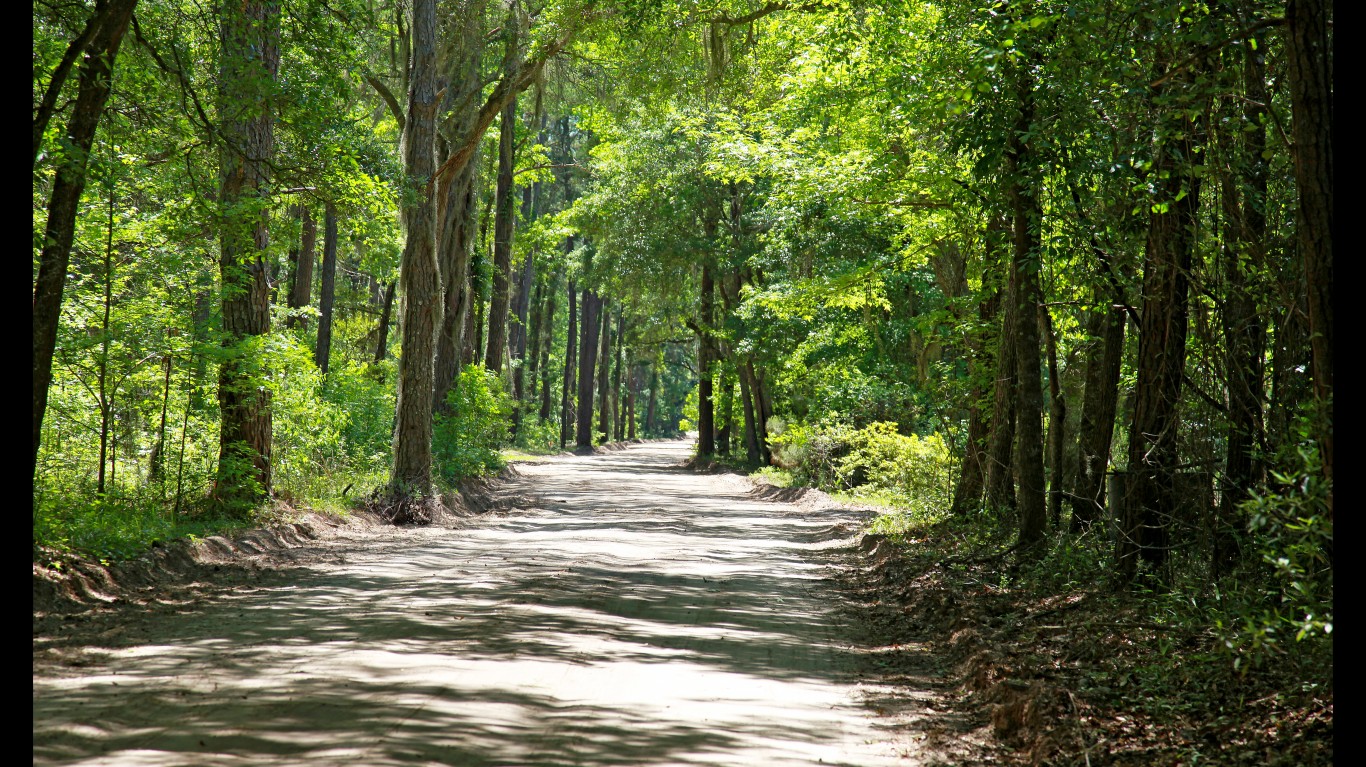
Daufuskie Island, South Carolina
Daufuskie Island has a rich history dating from early native American communities thousands of years ago. In modern history, Antebellum plantation life was replaced with an African-American Gullah culture, but now the island is more notable for its resorts. Though the island is often described as carless, many people living outside the resorts drive private vehicles. Still, cars are discouraged, and most tourists get around in rented golf carts.

Pontevedra, Spain
Like most villages and cities across Europe, Pontevedra was founded and grew for centuries before the invention of motor vehicles. While cars later took over its streets, in 1999 Pontevedra’s visionary mayor, Miguel Anxo Fernández Lores, banned them from the historic city center. This action reversed i’s deterioration and its modern history of danger, grime, and accidents. The city is now a thriving pedestrian and bicycle mecca, and its architecture and well-preserved medieval history are enjoying renewed appreciation.
[in-text-ad-2]
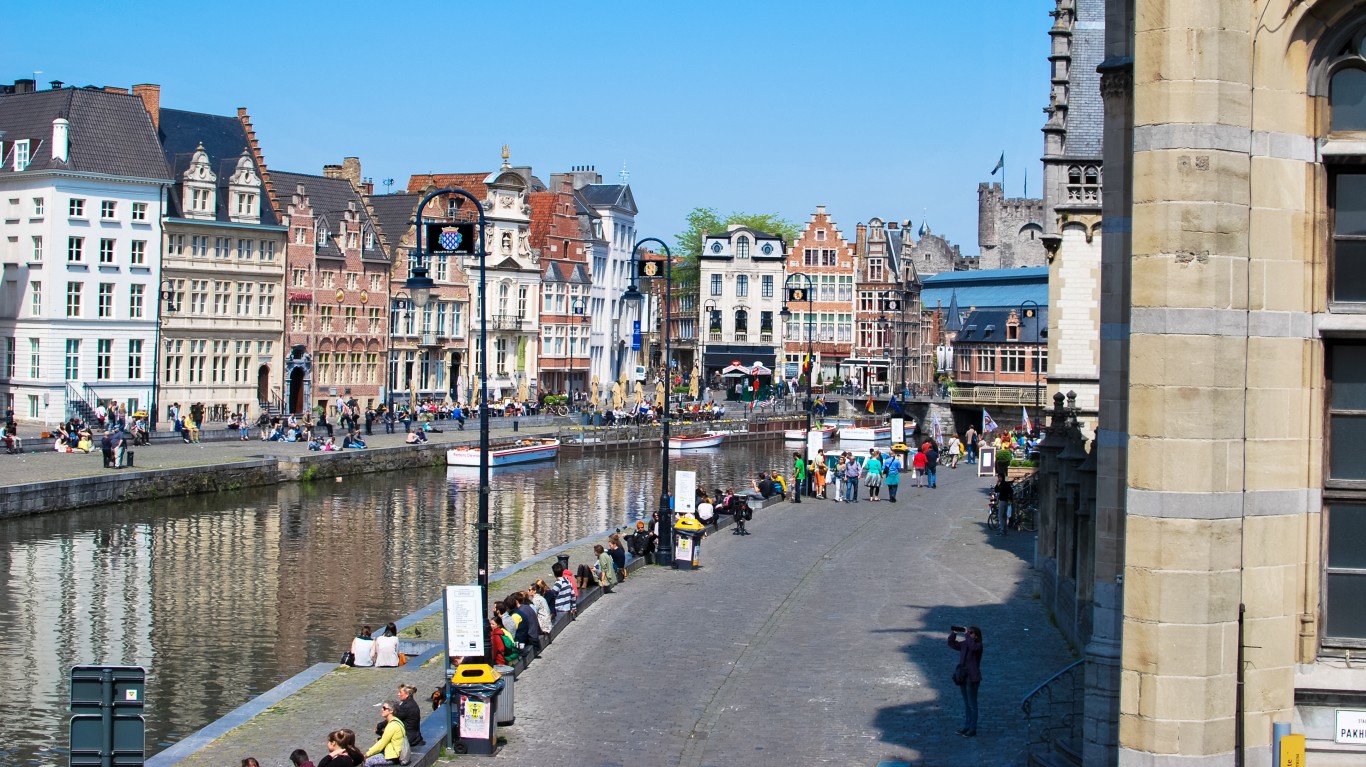
Ghent, Belgium
Controversial and hotly debated in the late 1990’s, Ghent’s nearly 90-acre pedestrian zone in the city’s historical district is now considered a huge success, with the public overwhelmingly in favor of a proposed addition of 37 more acres to the zone. A popular new program, called Living Streets, begun just two years ago, allows local residents to have their streets closed to car traffic during the summer months if they agree by a 70% majority.

Rottnest Island, Australia
Located off the western coast of Australia, Rottnest Island is easily accessed by ferry from Perth. Visitors mainly enjoy biking on excellent roads, but also snorkeling, sight-seeing, birdwatching, and other outdoor activities, including lying on a pristine beach. Though a highly protected preserve, the island has restaurants and a variety of accommodations, from campsites to hostels to upscale hotels. Though cars are not allowed, bus tours are available.
[in-text-ad]
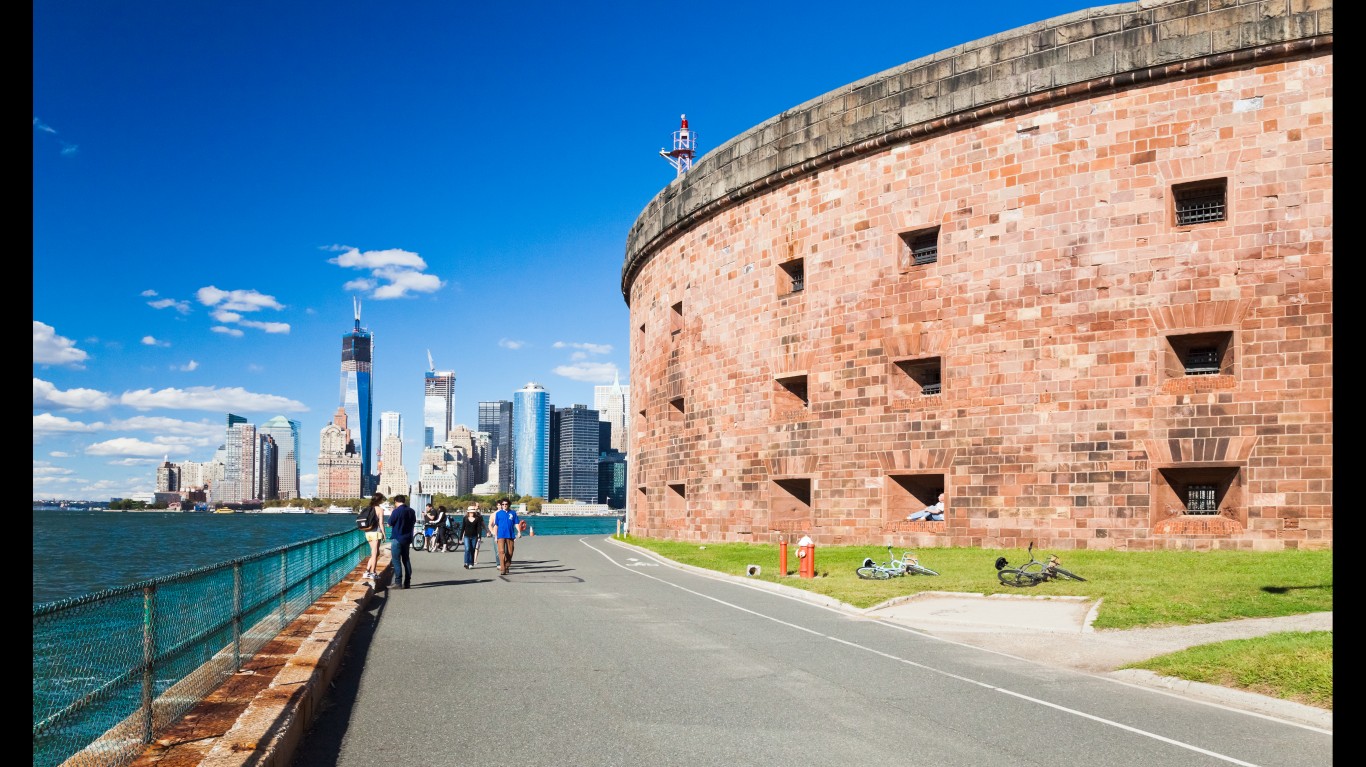
Governor’s Island, New York
A short ferry ride from Battery Park in Manhattan, Governor’s Island is a revelation — an immense new park in a city that has little opportunity for expansion. The island is a former army and Coast Guard base with a military history dating from the late 18th well into the 20th century. Historic buildings are being maintained as a national monument, leaving the rest of the 172-acre island for a still-developing public park, wonderful for biking, picnicking, exploring, and enjoying many special events. Cars, motorcycles, and other motorized vehicles are banned.

Halibut Cove, Alaska
The remote village of Halibut Cove, located on an island off the coast of Alaska’s Kenai Peninsula, is accessible only by seaplane or boat, and, once in the village, travel is by foot or ATV. There is only one restaurant, but several rustic accommodations are available for overnight visits. The island is known for bird-watching and other wildlife viewing, and there are also opportunities for kayaking.
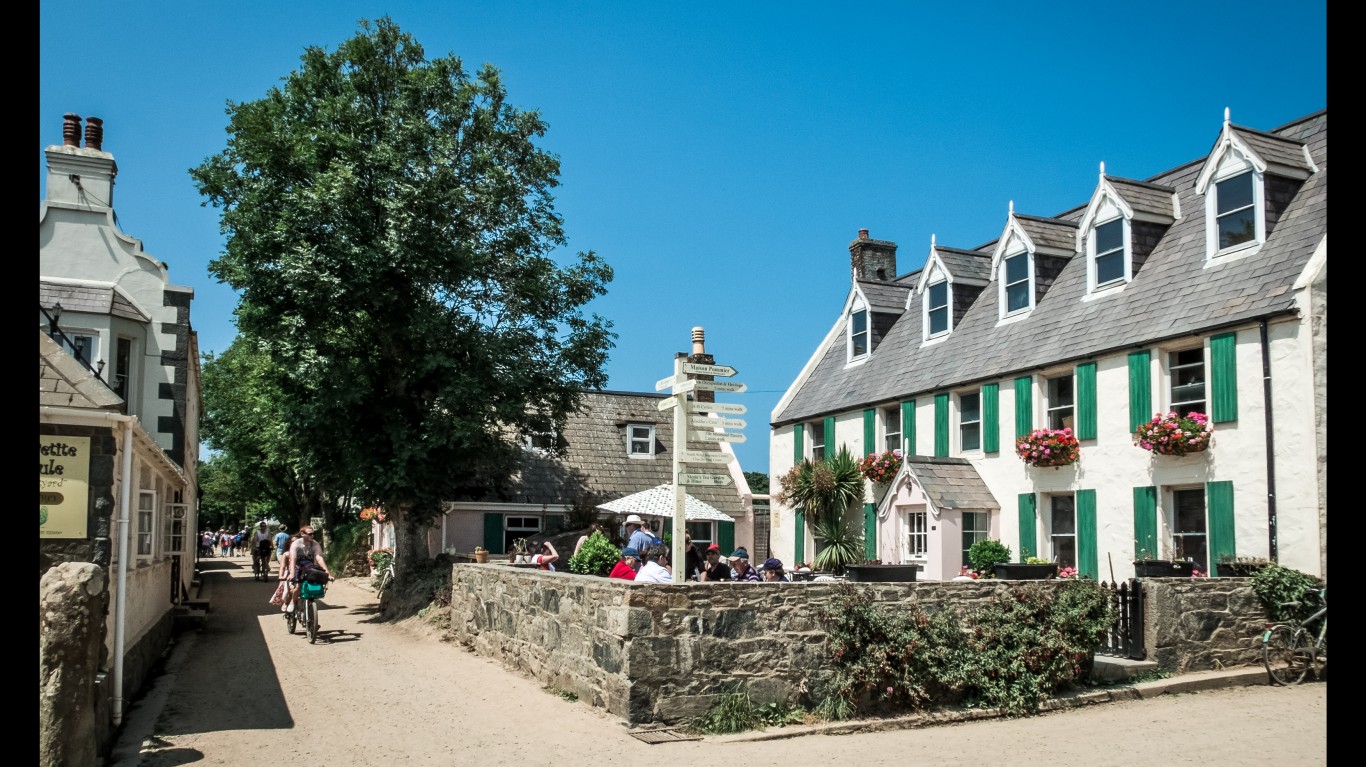
Sark, Channel Islands, United Kingdom
Sark is the smallest of the Channel Islands, in the North Sea between England and France. Accessible only by boat, it is quiet, agricultural island, belying the turbulent history attending its strategic location. Its modern-day tranquility and scenic beauty make it a pleasant vacation spot for relaxing, hiking, and touring by horse-drawn carriage — the only kind of vehicle allowed on Sark other than farm machinery. Because there are no streetlights, the island is also perfect for star-gazing.
[in-text-ad-2]

Venice, Italy
Notable for its crowds of tourists, sinking buildings, and vulnerability to a rising sea, Venice is the world’s most famous car-free destination. It is also quintessentially picturesque. Where other cities have roads, traffic circles, and parking lots, Venice has canals and bridges, and relies on boats for public and private transportation.

Tangier Island, Virginia
With only a single small grocery store in the tiny village, tourists come to Tangier Island for a Chesapeake experience — a boat ride to the island in the middle of the bay, a traditional meal in town, and perhaps an overnight in one of the village’s two quaint inns. For those who wish to spend more time taking in the bay air, there are bicycle rentals and golf cart tours of the island. There are a few cars on the island, but the roads are said to be just wide enough for two golf carts to pass one another.
[in-text-ad]
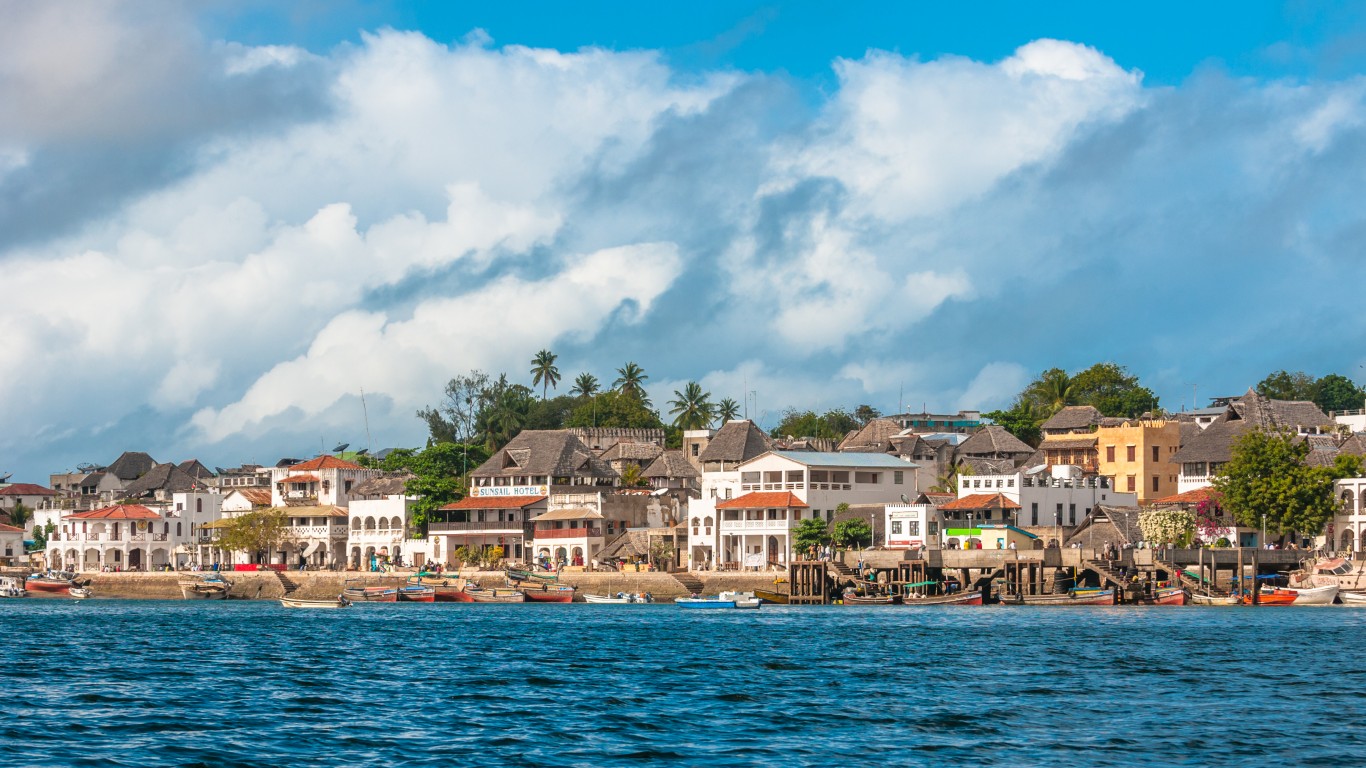
Lamu, Kenya
This exotic and historic island town, which grew out of a 14th-century Swahili settlement, offers visitors dunes, beaches, tiny villages, and posh resorts. It is accessible by plane and boat, but there are no cars on the island and transportation is mainly by donkey. Small sailboats of ancient design, called dhows, are used for travel among the surrounding islands and for access to Lamu’s beaches. Tourists are warmly welcomed in this former center for world trade, particularly in Lamu’s old town, with its narrow, winding streets that carry many hints of Portuguese, Turkish, and Arab influence.
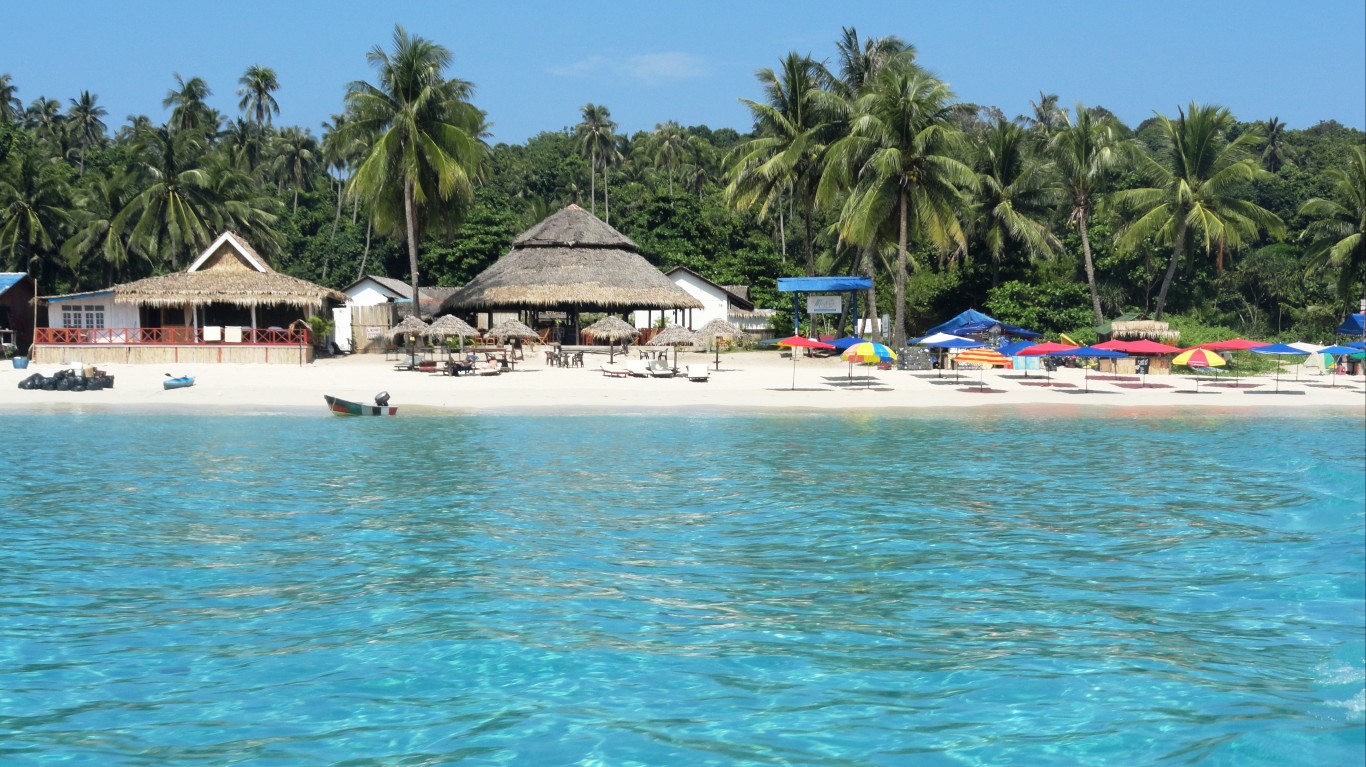
Perhentian Kecil Island, Malaysia
One of two Perhentian islands off the east coast of Malaysia, Perhentian Kecil is favored as an affordable tropical destination, offering campsites and basic cabins in addition to its luxury resorts. Visitors can hike forest trails between villages and beaches, go snorkeling or diving on the island’s coral reef, spend lazy days at the beach, and enjoy the party atmosphere of local bars and restaurants. The absence of motor vehicles on the island enhances its exotic feel.

Fes el-Bali, Morocco
Referred to as a medina — the Arab quarter of a North African town — Fes el-Bali is a well-preserved medieval enclave within the city of Fez. A UNESCO World Heritage site, it is closed to most vehicular traffic, making it one of the largest contiguous (nearly) car-free areas in the world, competing only with Venice for that honor. Walking through its narrow winding streets, visitors will find a plethora of monuments, market stalls, and atmospheric eateries.
[in-text-ad-2]
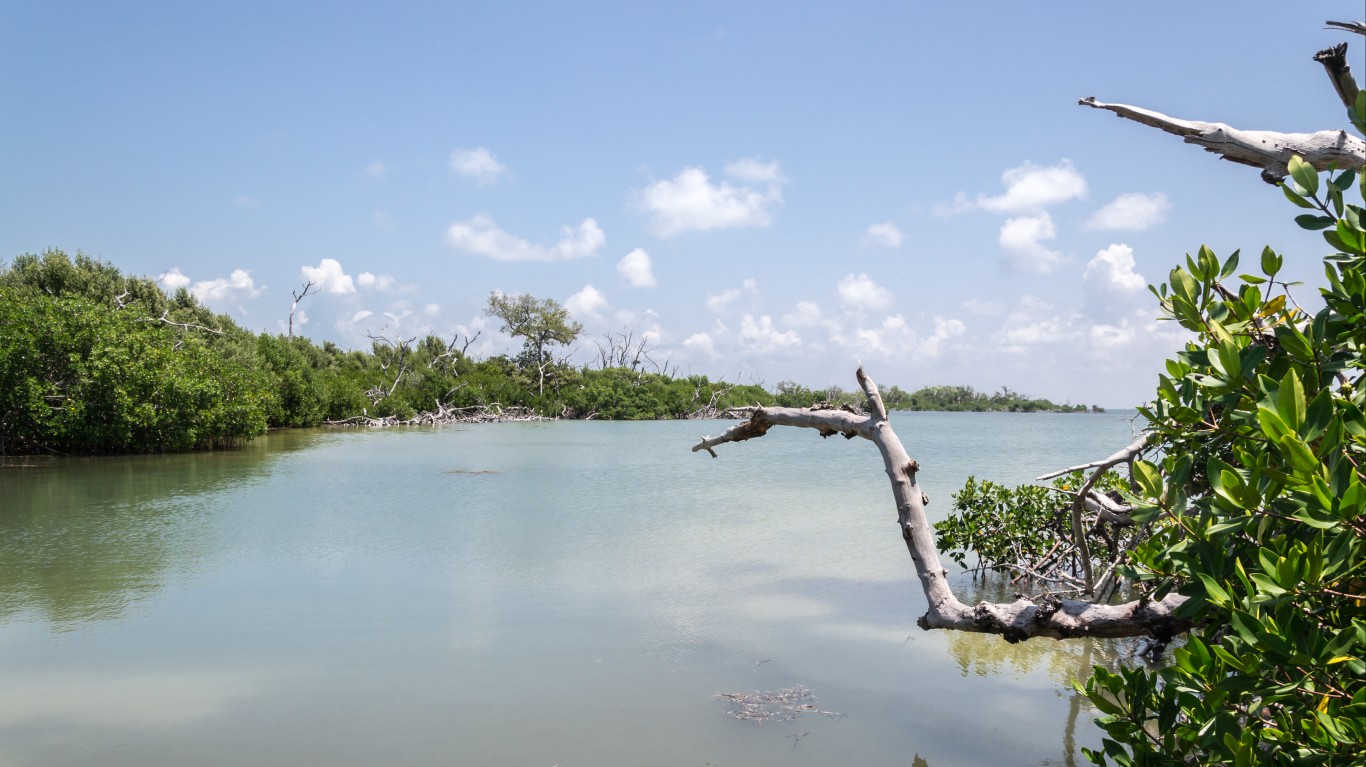
North Captiva Island, Florida
Close to the more famous, tourist-congested Captiva and Sanibel Islands, North Captiva Island is an unusual retreat for beach-lovers, with miles of sand and sea without the usual coastal Florida crowds. Because there are no cars allowed on the island, and because there are few tourist services, vacationing there has its challenges. Access is by ferry and island travel is by bicycle or golf cart. There is some housing, with short term rentals available, but half the island is a state park — making in something of a paradise for those not daunted by the logistics of getting there.
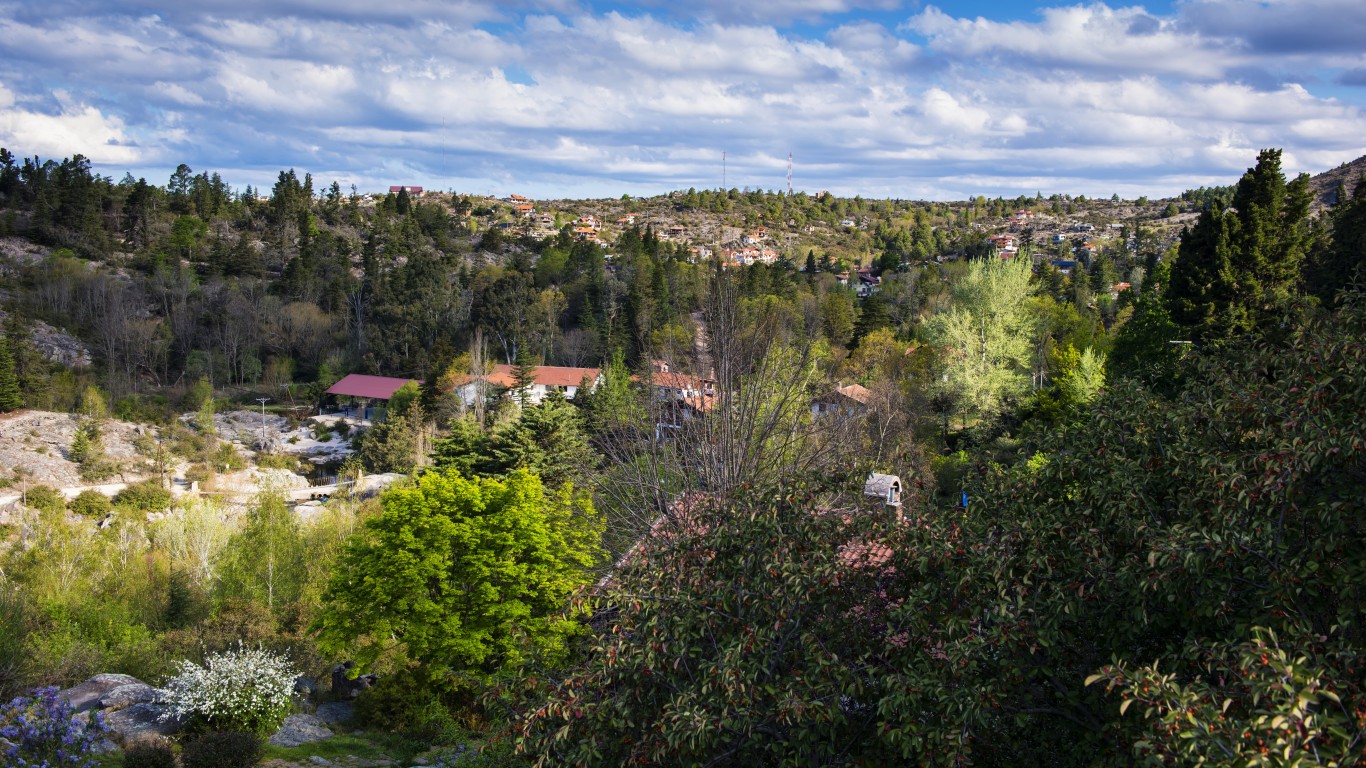
La Cumbrecita, Argentina
This tiny car-free village in a remote region of Argentina — visitors park their cars outside the town gates and proceed on foot — is a striking site, especially for European visitors who find themselves, by all appearances, in a German mountain town. La Cumbrecita was the brainchild of a German engineer who began building the town in the 1930’s, even planting the forests that now enhance the once barren land. He incentivized other Germans to settle there, requiring that buildings mimic the German Alpine style. About 300,000 tourists come every year for the area’s beauty, the hiking trails and ziplines, and German the cuisine.
[in-text-ad]

Hydra, Greece
Hydra, one of Greece’s most beautiful islands, is also one of its least congested, with much of the island undeveloped. It is popular with artists and has offered respite to a number of international celebrities — including Leonard Cohen, Eric Clapton, and actors Rex Harrison and Peter Ustinov — but tourists will find fewer accommodations here than on other Greek islands. They will also find a certain peacefulness in the absence of motor vehicles, and enjoy walks between the main town and several small villages.

Dubrovnik Old Town, Croatia
This well-preserved medieval quarter of Dubrovnik sits splendidly on the Adriatic sea, inviting visitors to walk along its high walls for the magnificent views of the village and surrounding islands. No cars are allowed within the confines of the Old Town, so residents and tourists alike walk its cobbled streets to enjoy beautifully maintained baroque and Renaissance architecture, steeped in history and evocative of the days when the town was a major trade center. The only significant obstacle for tourists is finding available parking outside the city walls.
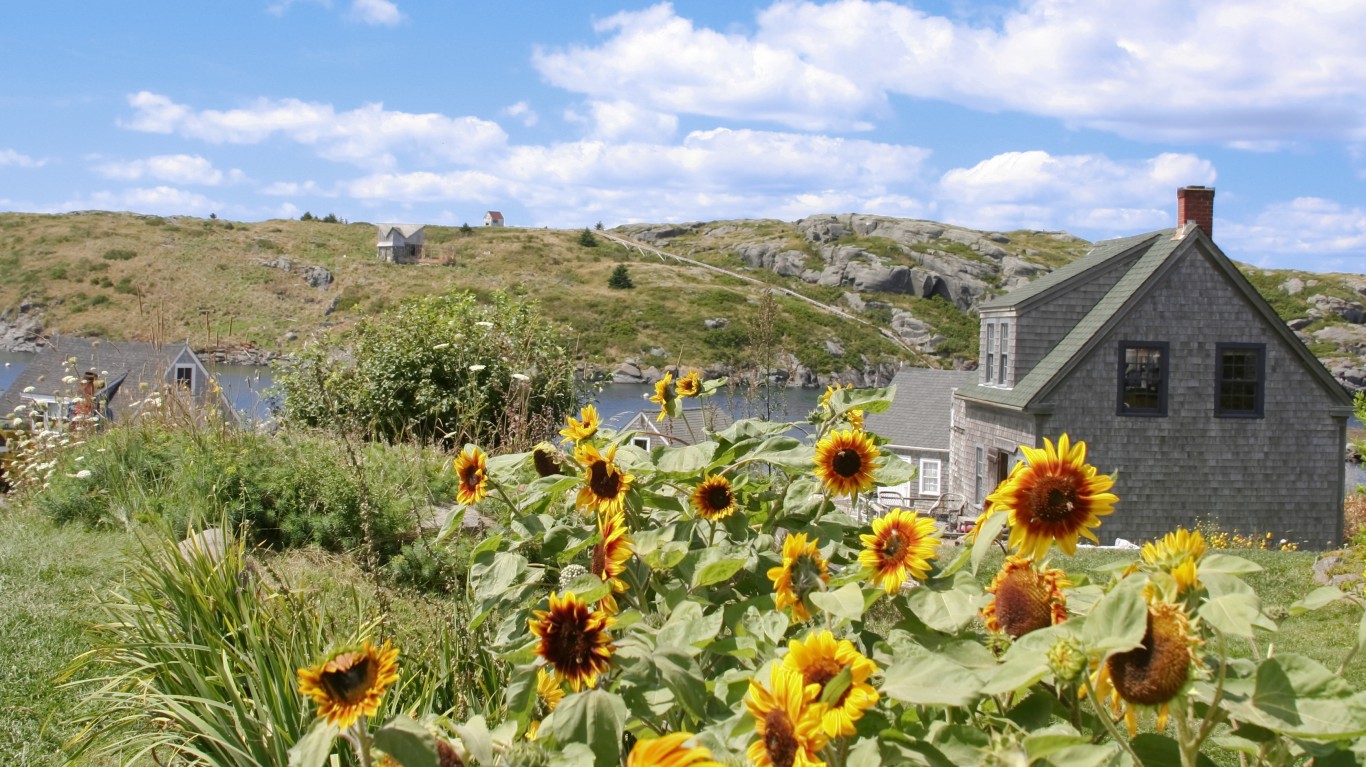
Monhegan Island, Maine
Though it is only about one square mile in size, Monhegan Island has a small artsy village and 12 miles of hiking trails through its sometimes rugged interior. It is ten miles from the mainland, with ferries (which don’t take cars) transporting visitors from three locations on the Maine coast. On the island there are no cars, roads, banks, medical facilities, public bathrooms, or garbage cans, and fewer than 75 residents. Still, tourists flock to the island for its beauty, art, and old fishing village atmosphere.
[in-text-ad-2]
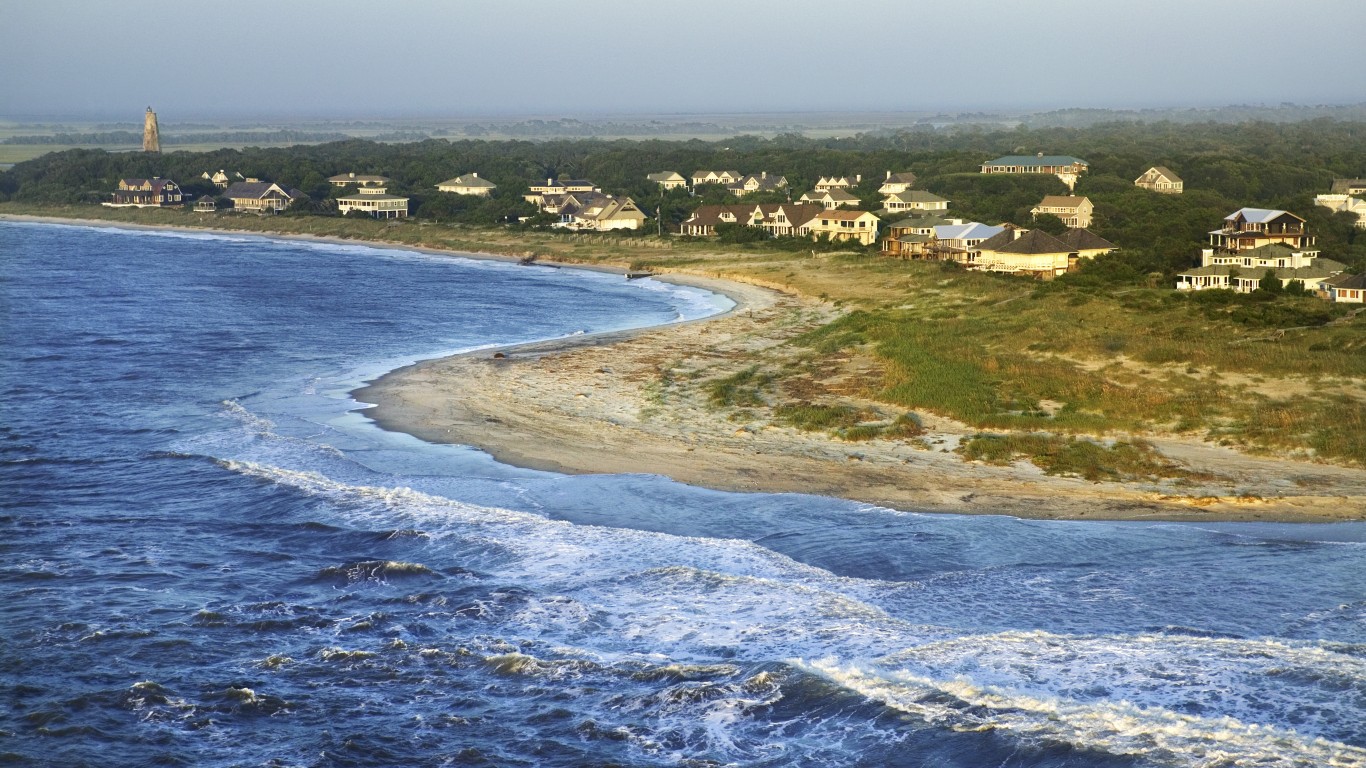
Bald Head Island, North Carolina
Considered a sub-tropical island, the northernmost on the Atlantic coast, Bald Head Island is a ferry ride from North Carolina and a car-free paradise. Travel is by tram, golf cart, or bicycle. The Island boasts the state’s oldest lighthouse — 108 steps will get you a spectacular view — and endless beaches for surfing, kayaking, and lazing. Most of the rest of the island is wild nature: More than 90% of the island is undeveloped and invites forest hiking and exploring.
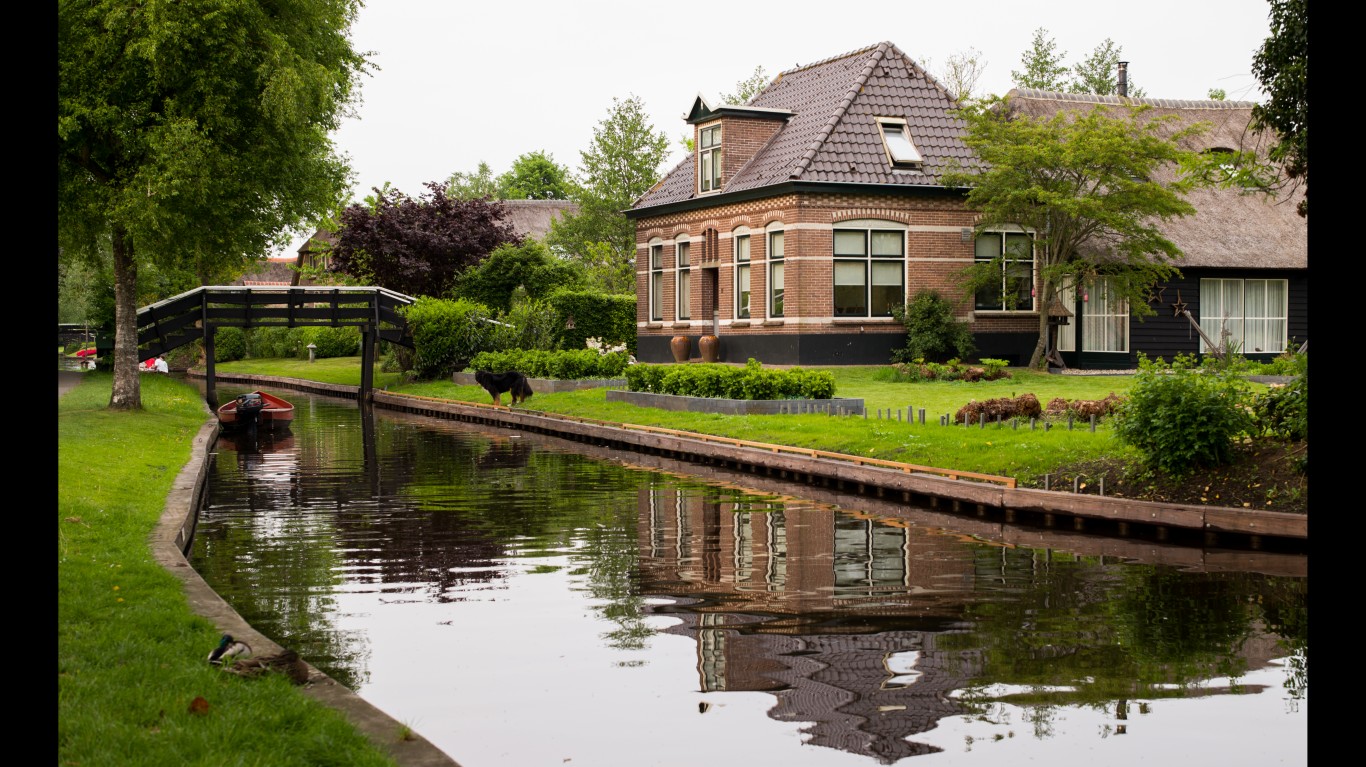
Giethoorn, Netherlands
This lovely Dutch village, 75 miles from Amsterdam, is actually a group of tiny peat islands connected by bridges. There are no roads or cars, and the silence adds to the village’s picturesque allure. Visitor and residents get around by foot or bicycle along the village paths and across its many pedestrian bridges, or by boat through its network of canals. There is a nearby wildlife park, also accessible by boat.
[in-text-ad]
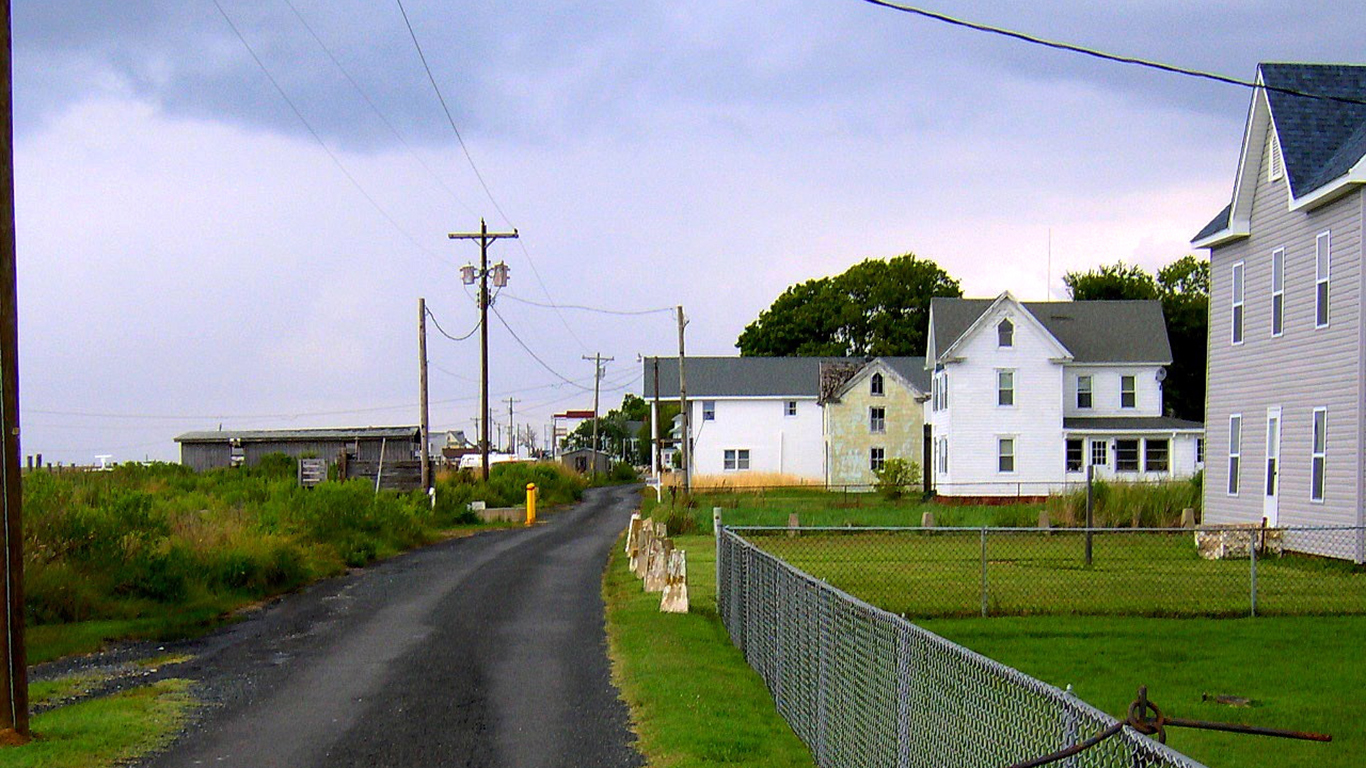
Smith Island, Maryland
Smith Island, in the Chesapeake Bay, is home to 276 residents, whose heritage dates back to the earliest dates of European settlement. As they’ve always done, they make their living mainly by crabbing. Though many locals drive cars and trucks, tourists are not permitted to bring motorized vehicles to the island and must rely on golf carts or shoe leather. There isn’t much in the way of the usual tourists accommodation available, but visitors come for the boat ride over and the back-in-time feel.
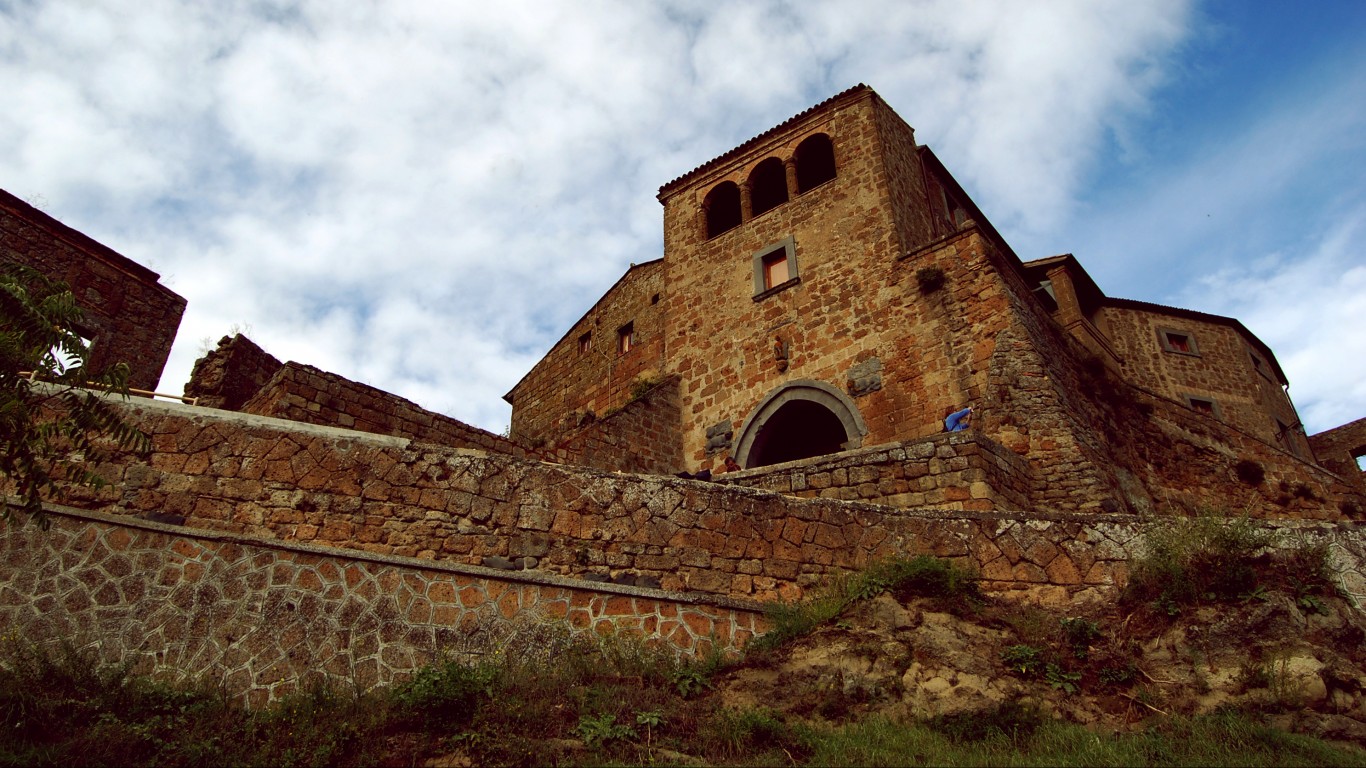
Cività di Bagnoregio, Italy
Cività is a 2500-year-old Etruscan Village, clinging to the edge of a cliff in central Italy. Several earthquakes over the course of time have taken their toll on the structures and the population, but people still live here and warmly welcome visitors. Tourists park in the “modern” city of Bagnoregio below and hike the steep path upward — and back into the Middle Ages — where they enjoy events in the main piazza, explore the narrow streets and historic buildings, and eat in the local restaurants.
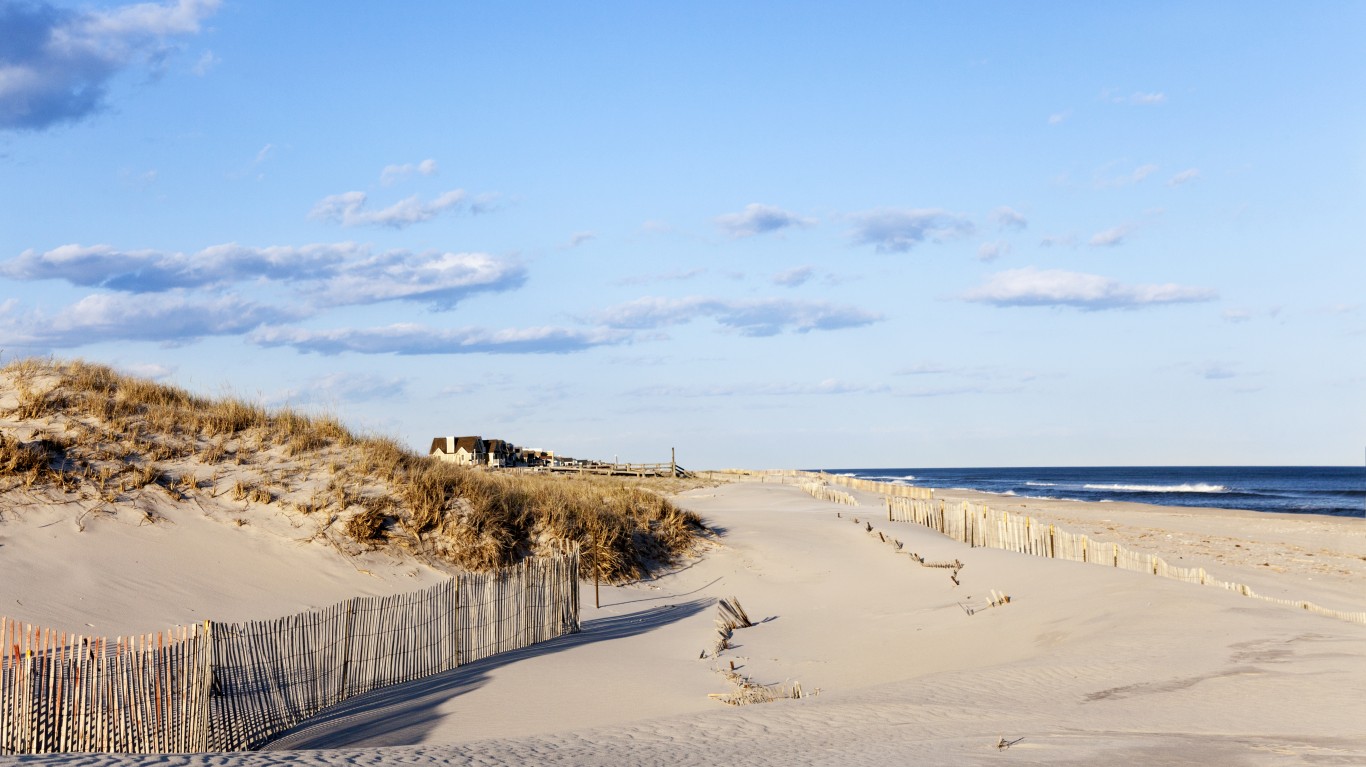
Fire Island, New York
Fire Island is a popular vacation destination off the coast of Long Island and readily accessible from the New York City metropolitan area. The 31-mile-long island is home to protected beaches, 17 resort communities, and a state park, a county park, and two national wildlife preserves. Access is by ferry to the walkable resorts and parks, and on-island travel is by foot and bicycle — with little red wagons serving as a popular means of carrying goods and possessions.
[in-text-ad-2]

Catalina Island, California
Though not strictly car-free, Catalina discourages motorized vehicles, with tight restrictions and decades-long waiting lists for car permits. But getting around the island is not a problem; there are taxi and trolley services, hotel shuttles, and bicycles and golf carts for rent. And the main town of Avalon, less than three square miles in size, is quite walkable. People visit the island for its shops, art, museums, restaurants, and endless recreational opportunities — including a zip line eco tour, water sports, golf, camping, hiking, and biking.
The Average American Is Losing Their Savings Every Day (Sponsor)
If you’re like many Americans and keep your money ‘safe’ in a checking or savings account, think again. The average yield on a savings account is a paltry .4% today, and inflation is much higher. Checking accounts are even worse.
Every day you don’t move to a high-yield savings account that beats inflation, you lose more and more value.
But there is good news. To win qualified customers, some accounts are paying 9-10x this national average. That’s an incredible way to keep your money safe, and get paid at the same time. Our top pick for high yield savings accounts includes other one time cash bonuses, and is FDIC insured.
Click here to see how much more you could be earning on your savings today. It takes just a few minutes and your money could be working for you.
Thank you for reading! Have some feedback for us?
Contact the 24/7 Wall St. editorial team.
 24/7 Wall St.
24/7 Wall St. 24/7 Wall St.
24/7 Wall St.

